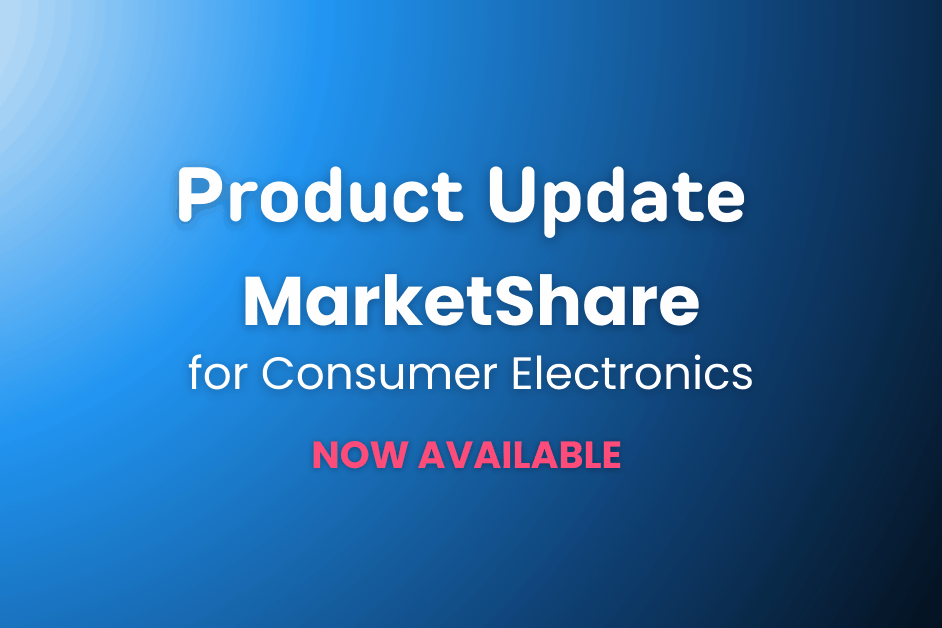Human behavior is undeniably complex. As explained by psychology, our actions and choices are immensely dynamic, influenced by both internal and external factors.
The decisions consumers make while shopping are no exception; understanding the intricacies behind consumer purchases involves more than reviewing sales data, numbers, and receipts.
In fact, relying solely on sales-oriented outputs to understand consumer behavior can result in making business decisions that ignore key consumer insights — namely, the why behind those metrics, who is shopping, and more.
In this article, we dive into the limitations retailers and manufacturers face when approaching market understanding through a receipt-only lens, and the significant benefits achieved by integrating additional consumer data sources such as survey data, demographic information, and SKU-level data at individual retailers, among others.
Diverse Data Sources in Retail
The key thing to understand about why retailers and manufacturers must look to more than receipt data is that the available data options are vast, and each presents a different perspective and insight into the market. From consumer surveys to receipt data let’s look at a selection of the options available, and the understanding they deliver.
| Data Type | Definition | High-Level Benefits / Understanding Delivered |
|---|---|---|
| Receipt Data | Data from photographed / emailed receipts | Enrich sales tracking and inventory management, understand the top-selling products in the market |
| POS Data | Direct-from-retailer transaction records | Highly representative but only for participating retailers |
| Survey / Panel Data | Consumer questionnaire responses | 100% representative of entire market; understand market perceptions, opinions, and trends through direct-from-consumer insights and feedback |
| Clickstream Data | User web behavior tracking | Online shopping behavior, gain better understanding of customer path to purchase |
| Credit Card Data | Aggregated transactions by location | High-volume of transactions, share by store |
Limitations of Receipt Data Alone
As illustrated in the chart above, relying on receipt data alone for market understanding greatly limits the market insights business can gain.
While inarguably a valuable component of market understanding, receipt data delivers a sales-only view, providing limited understanding of insights into consumer buying decisions, total share of market, demographics, and more.
Other limitations of receipt data include:
- Biased data. Due to the nature of consumer-submitted photographs and web receipts, a bias will exist in the consumers and brands represented. For example, app-based panels are typically more biased towards younger consumers and female panelists.
- Small sample size, poor market representation. While Cheetos and toothpaste are frequently purchased product categories, consumer durable categories result in poor consumer submissions. These low incidence items make it hard to get a large sample, as well as expect consistency, which can interfere with representation.
- Not self-sustaining for processing data. To process individual receipts, a library must support it to connect/translate individual items across retailers. Without this library, it’s just a bunch of numbers and letters on a piece of paper.
- Cannot calculate market share. Without receipts from all the retailers, it’s not possible to calculate share the way a random sample from a panel or survey does — as surveys can deliver 100% market coverage for brands and retailers.
This is where other sources of data, such as survey data, become so critical.
Limitations of Other Data Types
Receipt data is a hot button topic for manufacturers and retailers, which is why we have focused on the limitations of using that source alone. However, each source of data has its own limitations — simply by nature of what these unique data types are, how they’re gathered, etc.
| Data Type | Limitation(s) |
|---|---|
| Receipt Data | Bias in representation with consumers and stores tracked; requires use of product master to decode receipt information; small sample size; cannot be used for market share |
| POS Data | Requires retailer participation to gather data. Retailers can opt out at any time. Narrow market coverage. Not representative of market or share. Data typically masked or aggregated to not reveal specific store POS details or models/brands unique to that store |
| Survey / Panel Data | Consumer recall contains margin of error, must be balanced to census, difficult to calculate sales volume |
| Clickstream Data | Data is online only, cannot give market share, no foot traffic details |
| Credit Card Data | Cannot see individual purchase details or receipt information, just total spend, no consumer details |
The Key to Market Understanding: Data Fusion in Durables
Due to all the aforementioned limitations of individual data sources, it goes without saying that no single source is ideal for understanding the market.
The key to comprehensive understanding in durables is data fusion — that is, the blending of data sources to achieve the clearest picture of your consumers, products, competitors, and industry.
Let’s look at the types of data output accessible through these sources, the benefits of having access to each output, and how to obtain each.
| Data Output | Definition | High-Level Benefits / Understanding Delivered | Source Info |
|---|---|---|---|
| Market Share | Company sales percentages | Measure competitive performance and growth, Assess competitive market status, industry position, and market dynamics | Survey Data |
| Product Sales | Model-level performance data | Track how specific SKUs perform in the market, optimize product assortment and inventory management | Receipt DataPOS DataClickstream |
| Demographics | Buyer characteristics | Know who your typical consumer groups are, improve targeting and messaging to align with specific segmentations (best customers) | Survey DataSome Receipt Data (from specific providers) |
| Behavioral / Attitudinal | Consumer actions and habits; feelings and opinions | Discover the “why” behind the buy; base decisions on consumer behavior, improve personalization and engagement, and inform product positioning and marketing strategies | Survey DataSome Receipt Data (from specific providers) |
| Channel | Sales / distribution route details | Optimize effective distribution effectiveness, sales channels, and channel strategies with online vs. in-store (and beyond) performance data | Survey Data POS + Clickstream Receipt Data |
TraQline: the Leading Single Source of Truth for Durable Goods
Are you ready to get the most complete picture of your market? TraQline delivers total market insight for durable goods retailers and manufacturers, providing data from consumer to SKU. Our team uses receipts, surveys, clickstream and more to help our clients understand their consumers and the market for durable goods. To learn more about our suite of insights solutions, contact us below.
About the Author
Ashley Jefferson
Related blogs
Prime Day 2025 for Durables: Shopper Intent, Promotions & Where to Focus
Prime Day 2025 broke the mold. For the first time, Prime Day ran four full days, spanning July 8–11, twice the usual length, and emerged as Amazon’s…
Related blogs
Pros & Cons of Consumer Data Collection Types
Consumer data is a critical tool for understanding your market and improving your business…
Home Depot Market Share Breakdown: Q3 2025 Earnings Call Analysis
Inside the Home Depot Q3 2025 Earnings Call Home Depot’s Q3 2025 earnings call confirmed solid…
Find Your Winning Segments With MindShare + Claritas PRIZM® Premier
OpenBrand added Claritas PRIZM® Premier segmentation to their MindShare solution, which delivers…
OpenBrand Brings Modeled Market Share Data to Consumer Electronics
We are excited to announce the expansion of OpenBrand’s unparalleled modeled market share data into…





